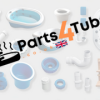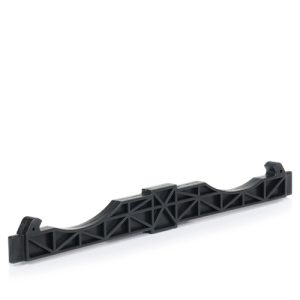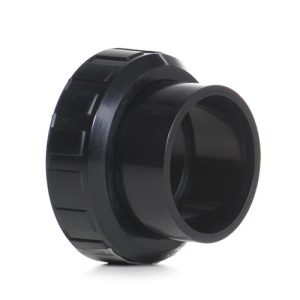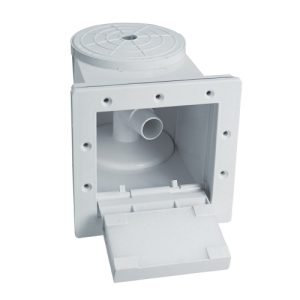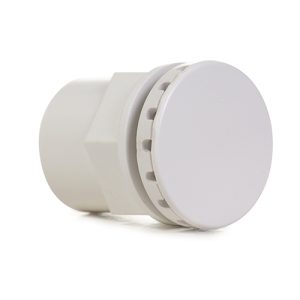BIO-UV Leaking Nut
£41.60 Inc VAT
Out of stock
Want to be notified when this product is back in stock?
BIO-UV Leaking Nut
Critical Compression Fitting for Quartz Sleeve Assembly
As a retailer of hot tub spare parts and pool equipment, I supply this essential sealing component for BIO-UV ultraviolet water treatment systems. The leaking nut, more commonly known as a gland nut or compression nut in UV system terminology, serves the critical function of securing the quartz sleeve assembly to the reactor chamber while creating a watertight seal that prevents water from escaping the pressurized system. This threaded compression fitting is fundamental to UV system integrity, as any failure of this seal can result in water leakage, compromised UV performance, potential electrical hazards, and system damage.
Understanding Gland Nut Function in UV Systems
The gland nut creates a mechanical compression seal by threading onto the UV reactor chamber housing and compressing an O-ring against the quartz sleeve and reactor body. This compression mechanism forms a watertight barrier that must withstand system operating pressure while allowing for the thermal expansion and contraction that occurs during normal UV system operation. The nut’s design balances several competing requirements: sufficient compression force to maintain reliable sealing, ease of removal during maintenance procedures, and protection of the fragile quartz sleeve from excessive mechanical stress.
The gland nut typically features a hexagonal or knurled exterior that enables hand-tightening without tools, though some applications may require wrench assistance for final sealing. The internal threads must maintain precise tolerances to ensure even compression around the O-ring circumference, as uneven compression can create leak paths or place asymmetric loads on the quartz sleeve that may lead to fracture.
Material Selection and Chemical Resistance
BIO-UV gland nuts are manufactured from materials specifically selected for their resistance to the corrosive environment encountered in pool and spa water treatment applications. The material must withstand continuous exposure to chlorinated or brominated water, pH-adjusting chemicals, and various sanitizing agents without degrading, corroding, or losing dimensional stability. Common materials for this application include engineered plastics, stainless steel, or specialized alloys that provide the necessary chemical resistance while maintaining structural integrity.
The gland nut’s material properties must also accommodate the thermal cycling experienced during operation. As water flows through the UV reactor, temperature variations occur that cause expansion and contraction of system components. The gland nut material must exhibit compatible thermal expansion characteristics with the reactor housing and quartz sleeve to maintain seal integrity across the operating temperature range.
Seal Integrity and O-Ring Compression
The gland nut works in conjunction with one or more O-rings to create the watertight seal essential for UV system operation. Proper installation requires careful attention to tightening torque, as insufficient tightening leaves inadequate compression for reliable sealing while excessive tightening can damage the O-ring, distort the gland nut threads, or place dangerous stress on the quartz sleeve. The compression force must be distributed evenly around the seal circumference to prevent localized stress concentrations.
Many UV system manufacturers specify hand-tightening only for gland nuts, designing the threads with mechanical stops that prevent over-tightening when proper torque is applied manually. This design philosophy protects both the fragile quartz components and the sealing elements from installation damage while simplifying maintenance procedures for operators without specialized tools.
Leak Causes and Troubleshooting
Despite proper installation, gland nut assemblies may develop leaks through several mechanisms. Thread wear from repeated installation and removal cycles can reduce compression effectiveness, creating leak paths as threads become loose or damaged. O-ring degradation from chemical exposure, aging, or mechanical damage compromises the seal, with water finding escape routes around the compression interface. Cross-threading during installation can damage both the gland nut and reactor housing threads, preventing proper sealing regardless of tightening force applied.
Foreign material on sealing surfaces, including mineral deposits, biofilm, or debris from previous O-rings, interferes with proper compression and creates leak paths. Thermal cycling can cause thread loosening over time, particularly in systems experiencing frequent temperature variations or on/off cycling. Regular inspection and maintenance of the gland nut assembly helps identify developing issues before major leaks occur.
Replacement Procedures and Best Practices
Gland nut replacement typically becomes necessary when threads are damaged, the component shows signs of cracking or structural deterioration, or leaking persists despite O-ring replacement and proper reinstallation. Before removing a gland nut, the UV system must be depressurized and drained to prevent water discharge during disassembly. The lamp assembly is typically removed first to prevent damage during subsequent procedures.
When installing a replacement gland nut, thread surfaces on both the nut and reactor housing should be thoroughly cleaned and inspected for damage. A new O-ring should always be installed with the replacement gland nut, with light application of silicone lubricant ensuring smooth installation and optimal sealing. The quartz sleeve must be properly positioned before threading the gland nut, taking care not to pinch or distort the O-ring during assembly. Hand-tightening proceeds gradually, checking for even compression around the seal circumference.
Maintenance Scheduling and Inspection
Regular inspection of the gland nut assembly should be incorporated into UV system maintenance protocols. During lamp replacement intervals, which typically occur annually or based on operating hours, the gland nut should be removed to inspect both the nut itself and the associated O-rings for signs of wear, damage, or degradation. Thread condition assessment helps identify developing issues before they lead to leaks or compromise system operation.
Professional pool service operations benefit from maintaining spare gland nuts in inventory, enabling immediate replacement when inspection reveals damage or when leaks develop despite O-ring replacement. This proactive approach minimizes system downtime and prevents the water damage and equipment complications that can result from persistent leakage.
Technical Specifications
| Specification | Details |
|---|---|
| Product Name | BIO-UV Leaking Nut (Gland Nut) |
| SKU | 7111676108 |
| Category | UV System Spare Parts |
| Compatible Equipment | BIO-UV UV Reactor Systems |
| Weight | 0.75 kg |
| Dimensions (L x W x H) | 0.045m x 0.045m x 0.015m |
| Volume | 3.0 × 10⁻⁵ m³ |
| Component Type | Compression Fitting/Gland Nut |
| Primary Function | Quartz Sleeve Retention and Sealing |
| Application | UV Reactor Chamber Assembly |
Protecting System Integrity
The gland nut represents a critical interface between the UV reactor’s internal water treatment environment and the external installation space. While appearing to be a simple threaded component, its role in maintaining pressure integrity, protecting fragile quartz components, and enabling serviceability makes it essential to overall system reliability. By maintaining properly functioning gland nuts and responding promptly to any signs of leakage or damage, UV system operators protect their investment while ensuring the consistent water treatment performance that justifies UV technology installation.
The relatively substantial weight of this component reflects the robust construction necessary to provide reliable sealing under continuous operating pressure, making genuine replacement parts essential for maintaining the performance standards that BIO-UV systems are engineered to deliver.
| Weight | 0.75 Kilograms |
|---|---|
| Length | 0.045 Meters |
| Width | 0.045 Meters |
| Height | 0.015 Meters |
| Volume | 3.0E-5 CubicMeters |
| Supplier | GoldenC |
Related products
Spares
Spares

